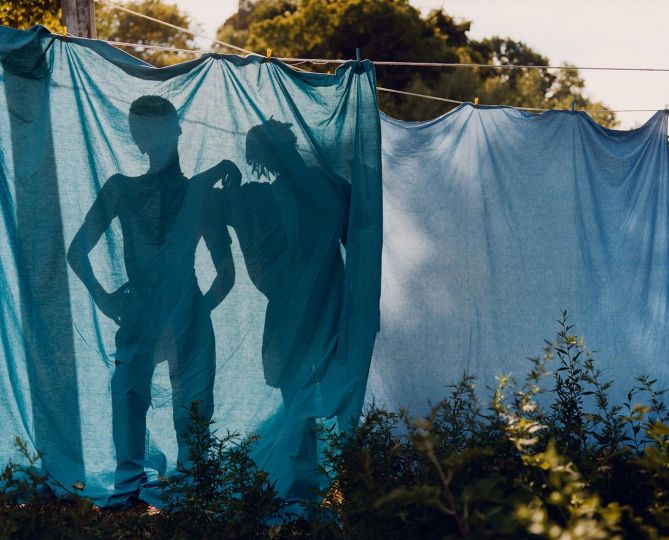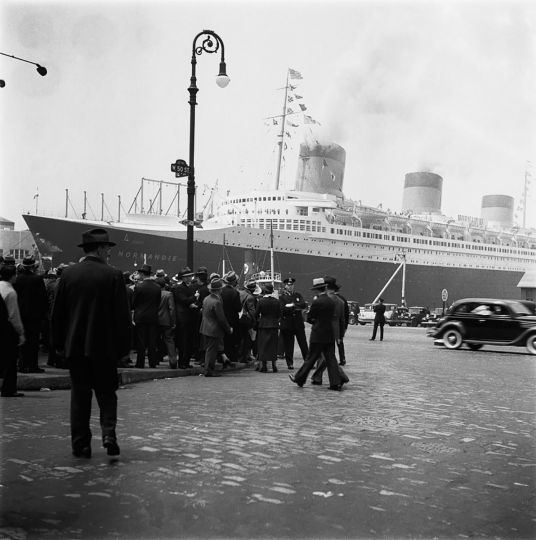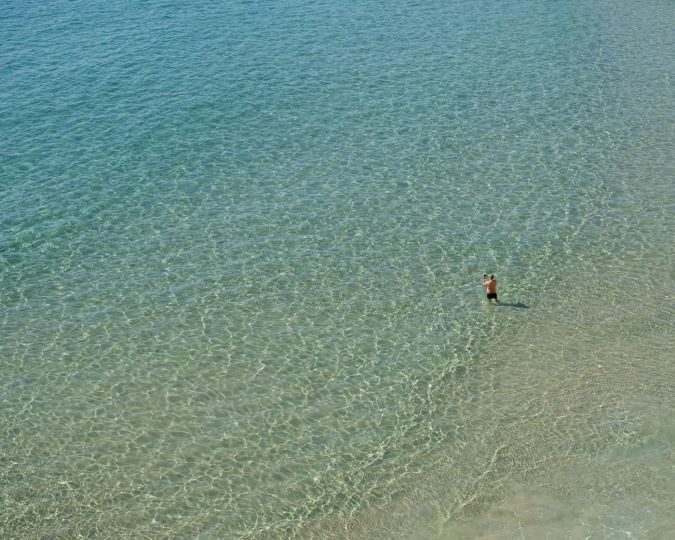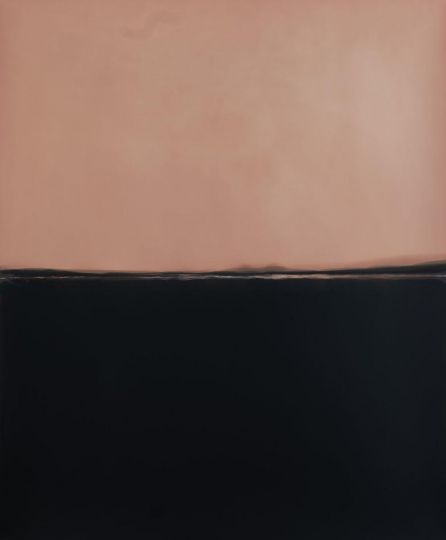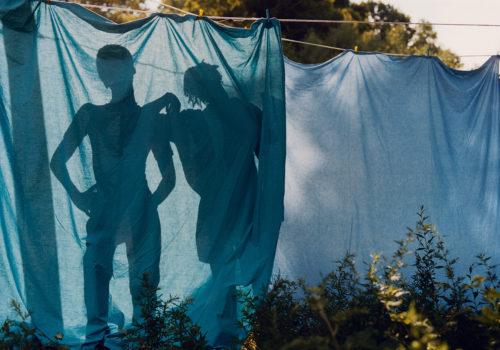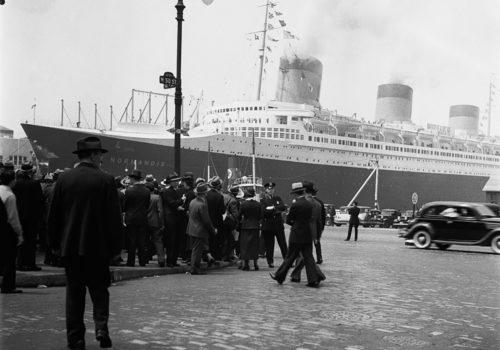Thierry Maindrault’s Monthly Chronicle
Certainly, we have already noted that photographic images have become, — in their technical achievement, catastrophic due to the disappearance of know how. That is not all, if the fighting stops due to a lack of fighters, the photographs become exhausted due to a lack of photographers worthy of using the name.
It is clearly established that the appearance of images became poor in quality, the question arises about the content of the artworks. What about the spirit, the history, the creation, the testimony of photographs? By observing behaviors, reactions and various analyses, I deduce that there is nothing left, or almost nothing. The balance of studies (technical and intellectual), for a shot (prepared or spontaneous) and subsequent adaptation (correction and enhancement), border on absolute zero, with tiny exceptions.
Preliminary remark, leaving the great Parisian show of photographic artworks [Paris Photo], I was reinforced in my rantings about the “artworks” currently in vogue on photography. Almost all the galleries exhibited old photographs. Photographic antiquities are claiming theirplace on the market (years 1850–1970). In passing, we must see that all the photos presented (with very varied techniques) are always of high material quality and true originality, even for very professional subjects. It was the time of photographers with sharp brains and objective technological mastery. In summary, a readable and well-preserved image, an image understandable without descriptor, a sensual and touching image, such are these prints which delight all audiences of connoisseurs or sympathizers. Large, or more modest, real galleries of all geographical origins and all specialties (those who take risks, not those renting wall space) offer and present works that appeal and which, above all, find buyers.
Why do current creations disappear from the market despite an overabundant quantities in all the pseudo-galleries, in poor exhibitions and in countless two-penny festivals?
We have already showed that the material quality of form had disappeared; but, it is not the only thing. The content of the photographic image has no meaning and when one exists: it is too often insipid.
The causes of these losses of sense and spirit are numerous and varied; my few enumerations are far from exhaustive.
• Firstly, it is obvious that creativity, in general, has been considerably impoverished since the end of the 1980s. Photography is not alone on this decline, which is as marked as it is explainable. All “media”, of bodily or intellectual expression, have suffered this degradation. The short term has taken hold with its rapid fashion rotations and a monetization of artworks no longer based on their intrinsic individual value; but on the multiple flows that it can generate. To be clear, financial gain is no longer made by purchasing an artwork to install on a wall. The jackpot grows on the number of clicks generated by installation of this work on one or more so-called social networks. Of course, we all know, in this new system, it is not the creator-photographer who gets the change in his pocket to live on. The apotheosis is found in these public establishments which buy original artworks at low prices, when they are not a gift from authors, to make incomes by renting them to everyone. In the latter case, I have frequently noticed that the said artworks are only so in name. These superficial and ephemeral worlds cannot in any way be linked to the creator who thinks and works for sustainability.
• The themes used for research, design, and construction of a photograph have become very egocentric, without being fully assumed by their author. The drift sets in when the “Who am I?” » turns into “What I think about my thoughts and the evolution of my feelings”. A self-psychotherapy — at a lower cost — to share with the greatest number of amazed virtual followers. The tidy sums saved, from paying a good psychiatrist, will be immediately invested in a budget-consuming pseudo-gallery or in the self-publishing of a particularly indigestible book. We have all seen these self-portraits, of naked forms, perfectly blurred (from inexperience) in a gloomy half-light (designed to be seen as chiaroscuro) or these bodies, always naked, planted in nature in the middle of unattractive vegetation. I will spare you the wasteland settings, which quite frequently give a pornographic side to the image. It is very trendy; but without the slightest interest for the public, except perhaps for the author or a few “voyeurs”.
• The mass of photographs produced every second makes any normally constituted person dizzy. Even if, as with the iceberg, nine tenths become invisible in the following month. It remains true that the surviving images are still in excess. Quantity having always been a constraint, even an enemy, of quality. Quantitative exuberance quickly ate away at the content of the photographs. The race to the bottom does not spare our images. The decrescendo grew in the vicious spiral. Any owner of a tool to take images, visiting an exhibition of photos far from the best, immediately imagines that he is able of doing just as well, if not better. This is not the case, however, there is no reason why he should not also exhibit… and so on. The snowball also works for illusions. The outcome is painful for authentic photographers; but, so juicy for all the incompetent parasites who benefit from this planned destruction.
• In the name of a stupidity, with infinite financial hopes, many naive people (ready to be cheated) imagine that binary digital concept (called under the erroneous pseudonym of AI) will make them the Leonardo da Vinci of their generation. Nobody knows anything about it, which is ultimately irrelevant, since the computer is there to spit out masterpieces at a sustained rate. Thus, the dream of global and eternal recognition is envisaged by these parasitic creators who try to impose themselves. Their wealth is formed from looting the stocks of imprudent donors to social networks, from the theft of respectable works, from among the disfigurements of the art work of others (without authorization, without excuse, without remuneration). Our friend Alfred Jarry’s “extractor of brain” has come into action.
• I limit this list of origins which seems inexhaustible by ending with the impact of “to be up to fashion” made unavoidable by the list of harassment of all forms of communication. A photograph cannot only be taken into consideration on the imperative condition of being in fashion. I must point out that photography no longer systematically means an image is produced, it is almost always the author who is the reference. Now, the criteria of personal life like sexuality, religion, skin color, politics, brotherhood, etc. are much more important than the subject treated or the techniques applied to challenge or to seduce the reader. Nothing is more frustrating for a good creator than to learn that he was chosen for who he is and not for what he does.
The daily whirlwind blinds us to the point of no longer knowing what is a good photograph (first to realize that it is indeed a real one). How can we not react to the disappearance, by asphyxiation, of the true and good photographers in our societies.
All good images have a soul within them. Unfortunately, the works of the new millennium are totally empty and dry for the mind!
Thierry Maindrault, November 17, 2023
your comments about this chronicle and its photography are always welcome at


